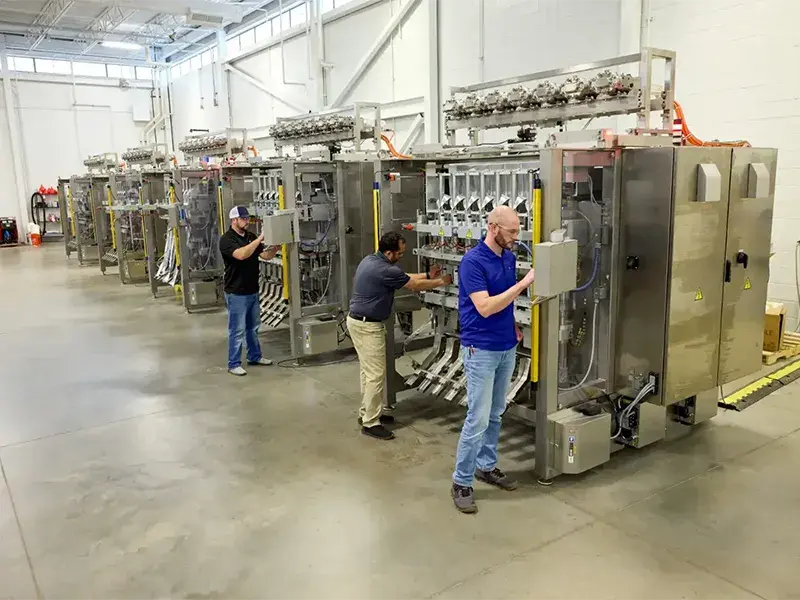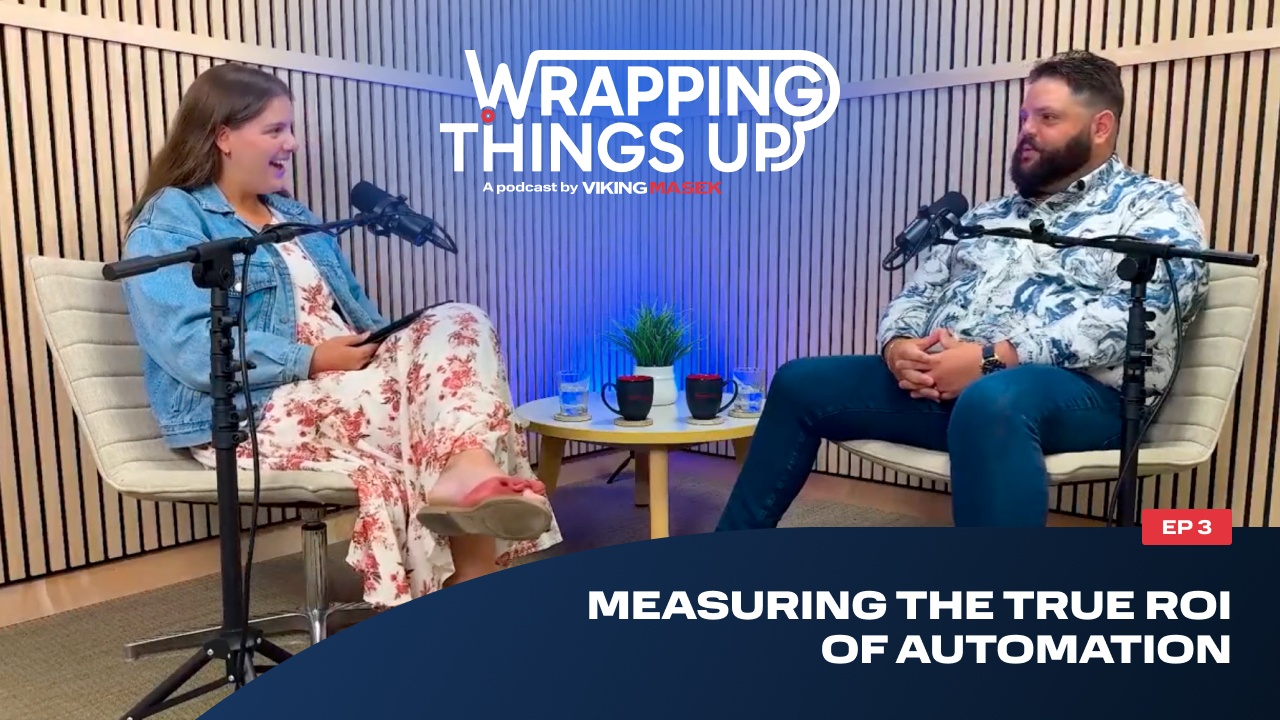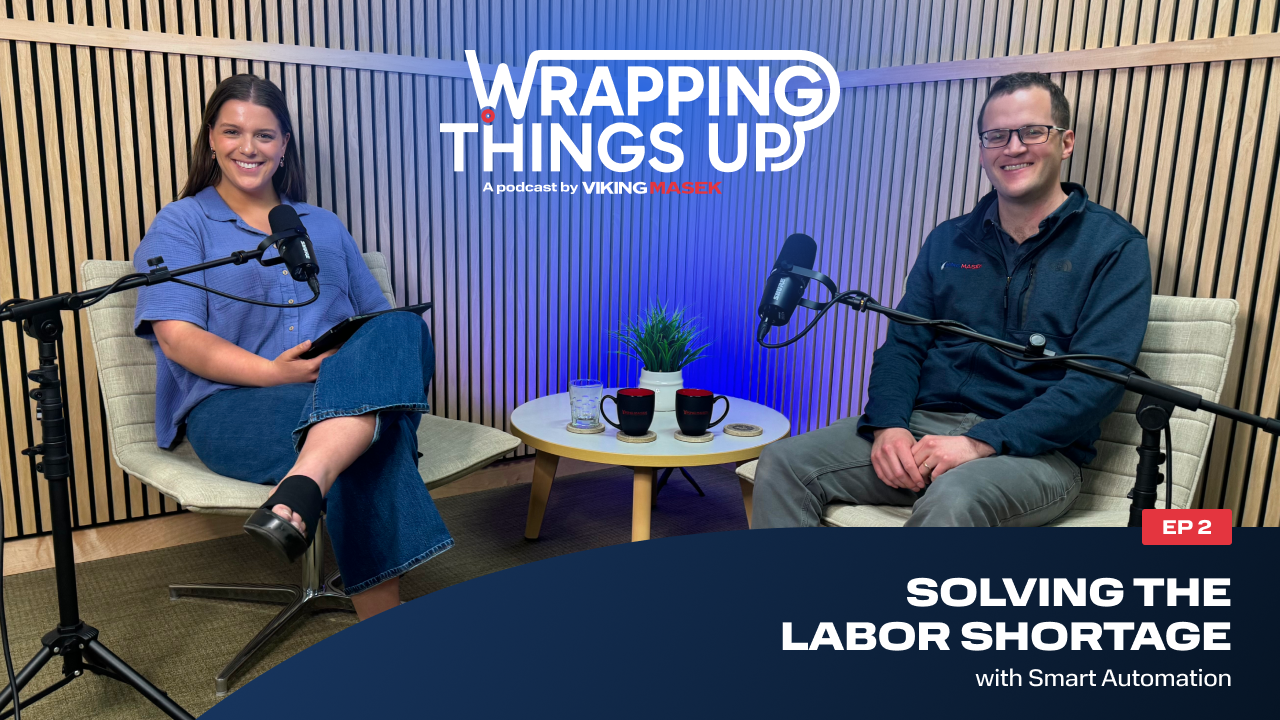How Packaging Automation Helps Build a Stronger Workforce
By Andrew Bayliss on June 23, 2025

Automation used to be seen mainly as a lever for speed and cost savings. But in today’s manufacturing world, it’s something much bigger: It’s a strategic tool for building a more flexible, satisfied, and future-ready workforce.
Facing rising labor costs, generational turnover, and a shrinking pool of skilled workers, manufacturers are reevaluating what automation really means. And here’s the truth: When implemented thoughtfully, automation doesn’t eliminate jobs — it makes them better.
Today’s Workforce Challenges Are Real — and Urgent
Manufacturers aren’t short on challenges. Across industries, leaders are facing:
- A skilled labor shortage that’s only growing
- High employee turnover and burnout, especially on manual production lines
- An aging workforce coping with physical strain
- Difficulty attracting younger workers who expect tech-forward, purpose-driven environments
If you’re feeling the squeeze, you’re not alone. The good news? Automation can help — and not just on the output side.
More Than Machines: How Automation Strengthens the Workforce
It’s time to rethink what automation does. Yes, it improves efficiency; but it also plays a major role in workforce transformation. Here's how:
1. Reduces Repetitive and Physically Demanding Tasks
Automation takes on the most repetitive and injury-prone work, allowing long-tenured team members to stay on the floor longer…and more safely. That’s a huge win for workforce longevity.
2. Improves Job Satisfaction
Instead of forming, filling, or sealing by hand, operators can now monitor lines, ensure quality control, or handle troubleshooting. It’s a shift from physically demanding work to engaging, oversight-oriented roles.
3. Enables Upskilling
As systems evolve, so do the roles. A line worker might become a tech operator; a packager might become a data analyst. Automation introduces opportunities for internal career paths, not just jobs.
“The goal isn’t fewer workers — it’s better jobs for the workers you have.”
- Andrew Bayliss, National Sales Manager, Viking Masek
Real Impact: Happier Teams, Better Results
A national snack food producer partnered with Viking Masek to replace labor-intensive processes with a fully integrated snack packaging system. The turnkey solution included two high-speed bagging lines feeding into automated case packing.
The results?
- Production doubled
- Labor on the line reduced by 40%
- Manual packing, conveying, and sealing eliminated
- Former line workers reassigned to other facility roles
- Overpacking and product waste significantly reduced
- Seamless integration and post-sale support ensured success
The move to automation improved accuracy, efficiency, and customer satisfaction—without increasing headcount.
Attracting the Next Generation of Talent
Younger workers don’t just want a paycheck – they want purpose, development, and access to technology that reflects the world they live in. Packaging automation can help you deliver on that.
By creating tech-forward, collaborative roles, automation gives you a competitive edge in talent recruitment. It signals innovation, and shows your team that you’re investing not just in equipment but in them.
What to Look for in a Workforce-First Automation Partner
To succeed, you need a partner that understands this isn’t just about throughput — it’s about people.
Here’s what to look for:
- Training and onboarding support: Prioritize finding a partner that invests in your success by providing thorough, engaging training tailored to your needs
- Scalable systems: Modular machines let you evolve your processes — and your workforce — at a pace that works for you. For example, you could start with the “low hanging fruit” – primary packaging like bagging/flow-wrapping – and expand to secondary packaging automation, such as case-packing and palletizing
- Proven experience: Ask for case studies that reflect your scale and industry. Viking Masek works across food, beverage, health & medical, and consumer goods, and understands the unique labor demands of each. Also, request a short or full-length video of the equipment running a product comparable to yours. Seeing it in action helps confirm the supplier understands your specific packaging requirements
- A people-centered mindset: Look for a partner that talks about your workforce as much as your output
As Jordan Miller, Viking Masek’s GM of Customer Service, put it during the first episode of the Wrapping Things Up podcast:
“A successful automation implementation isn’t just about the machine; it’s about how well your people are trained to run it. Our goal is to make automation feel simple, not intimidating.”
Automation = Optimization, Not Replacement
If there’s one takeaway from all of this, it’s that automation isn’t here to replace your team — it’s here to optimize them.
It helps experienced workers stay safe and remain on the production floor longer. It creates more meaningful, tech-savvy roles for younger talent. And when you partner with a company that gets both the tech and the people side of the equation, it sets your entire organization up for long-term strength.
Viking Masek believes packaging automation should be simple in motion — and that includes how it supports your workforce.
Want to hear more real-world stories and expert perspectives? Subscribe to the Wrapping Things Up podcast for insights into workforce trends, automation success stories, and what’s next in packaging.
Related Posts

How Packaging Automation Extends ROI Beyond the Payback Period

5 things you should do before attending Specialty Coffee Expo
